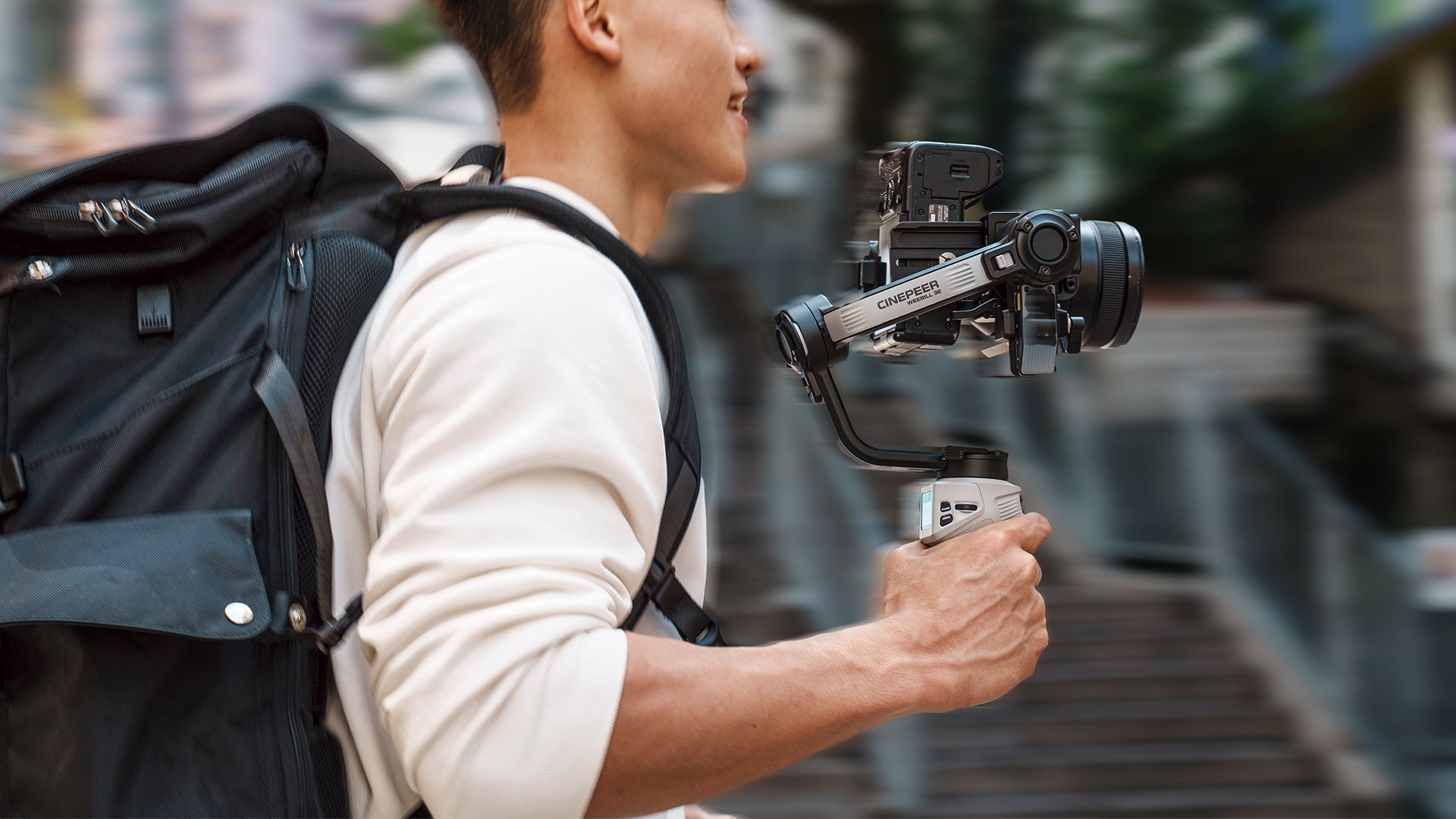Introduction
As a filmmaker, choosing the right camera support equipment is crucial for capturing high-quality footage. Two popular options are handheld gimbals and flycams. While both serve similar stabilization functions, each has their own strengths depending on your production needs. Let’s explore the key differences between gimbals and flycams to help you decide which is the best fit.
What is a Flycam?
A flycam utilizes a counterbalanced camera platform that hangs from an over-the-shoulder rig or jib arm. The camera “flies” freely along articulating support arms, ideal for creating swooping jib and slider-like movements on a larger cinematic scale. Flycams accommodate heavier cinema camera payloads but require more extensive setup.
What is a Gimbal?
A gimbal is a motorized device that uses internal sensors and motors to detect pitch, roll, and yaw movements and counteract shakes in real-time. Popular gimbals like the ZHIYUN Crane 4 provide buttery smooth handheld shots without jitter. The Crane 4 is lightweight, stable, and capable of handling heavy payloads. It features a new wrist rest and handle for improved grip, balance indicator lights for precise calibration, and a magnetic wrench and reflector for added convenience, showcasing its professionalism and attention to detail.

Gimbal vs Flycam Usage
- Gimbals excel for run-and-gun shooting from the hand or atop camera rigs. Flycams need time to rig precisely for pre-planned moves.
- Gimbals enable spontaneous docu-style shots following unpredictable action. Flycams suit staged productions with repeatable moves.
- Flycams fatigue the body less but restrict movement within their calibrated range. Gimbals move with full mobility anywhere.
Stabilization and Shots
- The3-axis gimbalstabilization system like the ZHIYUN gimbal camera stabilizer series counters micro-jitters and pans/tilts smoothly. Flycams depend more on handling for precision moves.
- Flycams glide stably on weighted arms but shaking initiates at higher speeds than dampened gimbals.
- Gimbals produce nimble tracking shots within balances. Flycams create epic scaled slider/jib shots and reveals.
Gimbal vs. Flycam: Comparing Key Factors
- Stabilization Quality
Gimbals generally offer superior stabilization due to their motorized systems. They can handle rapid movements and complex shots with greater ease and consistency. Flycams, while effective, may not provide the same level of smoothness in very dynamic conditions.
- Ease of Use
Gimbals are more user-friendly, often featuring auto-calibration and straightforward controls. Flycams require manual balancing and more skill to operate efficiently, making them less accessible for beginners.
- Battery Dependency
Gimbals rely on batteries, which means you'll need to manage power levels and have spares ready for longer shoots. Flycams, being mechanical, do not have this limitation, offering uninterrupted operation.
Which Should You Choose?
The decision between a gimbal and a Flycam ultimately depends on your specific filmmaking needs, budget, and level of experience.

Choose a Flycam If:
- You are shooting in remote locations where battery charging is impractical.
- You prefer a lightweight and portable device for on-the-go filmmaking.
- You are comfortable with or willing to learn the manual balancing process.
Choose a Gimbal If:
- You need superior stabilization for dynamic and complex shots.
- You prefer a device that is easy to use with minimal setup.
- You are shooting in environments where battery management is not a significant issue.
For those seeking an even more portable gimbal that still delivers professional stabilization, consider the ultra-compact ZHIYUN WEEBILL 3E. Weighing just 990g and roughly the size of an A4 sheet, the WEEBILL 3E fits easily into any shooter's kit bag. Its ergonomic design, Bluetooth shutter control, customizable buttons, native portrait switching, and Sling Mode 2.5 features make it highly usable for both run-and-gun documentary work as well as controlled on-location filming.
Conclusion
Both gimbals and Flycams offer valuable stabilization solutions for filmmakers, each with its own advantages and limitations. Understanding your needs will help you choose the right tool to enhance your creative vision and elevate your footage quality. To learn more about other essential filmmaking equipment, check out our guide: THE GUIDE TO ESSENTIAL FILMMAKING EQUIPMENT.
FAQ:
Q: What is the main difference between a gimbal and a Flycam?
A: The main difference lies in their stabilization mechanisms. Gimbals use motorized systems with sensors to stabilize the camera in real-time, while Flycams rely on counterbalanced platforms and mechanical stabilizers.
Q: Do gimbals or Flycams provide better stabilization?
A: Gimbals typically offer superior camera stabilization, especially in dynamic and complex shooting conditions, due to their motorized systems. Flycams are effective but may not be as smooth in very dynamic situations.
Q: What types of shots are gimbals best for?
A: Gimbals are best for dynamic tracking shots, smooth pans, tilts, and following unpredictable action due to their motorized stabilization and full mobility.
Q: What types of shots are Flycams best for?
A: Flycams excel at creating smooth, cinematic movements such as swooping jib shots, stable slider movements, and large-scale reveals, especially in staged productions.













































